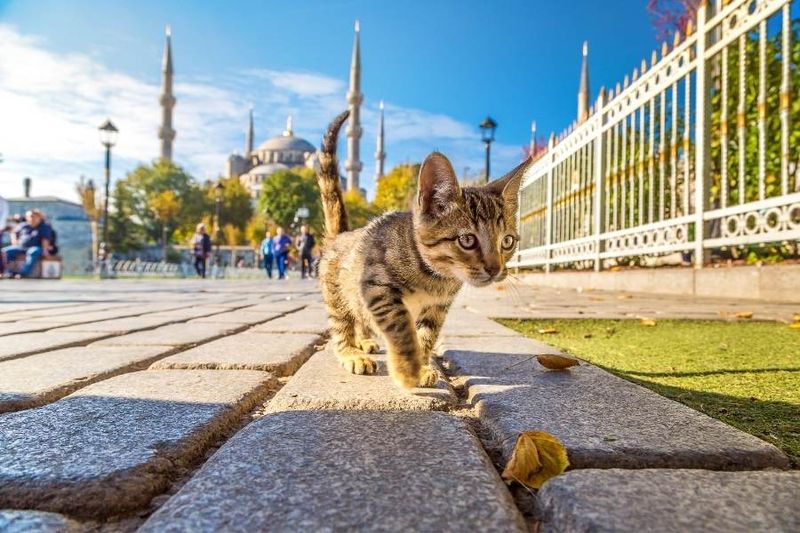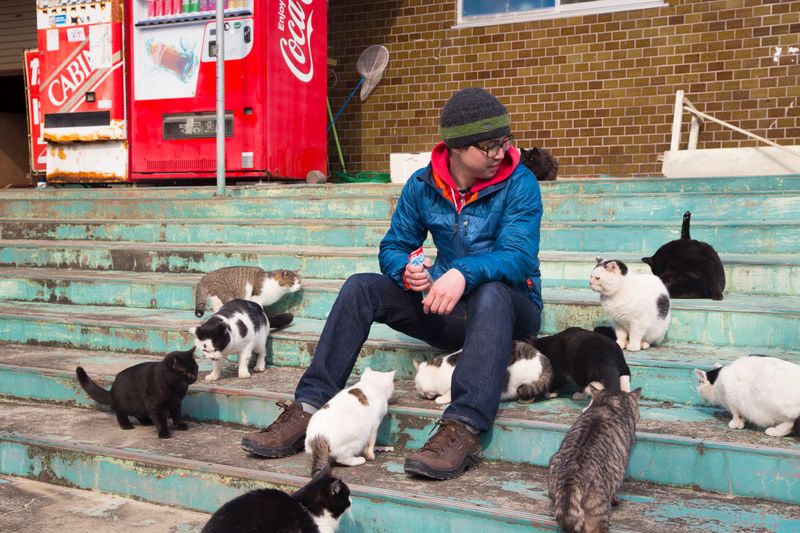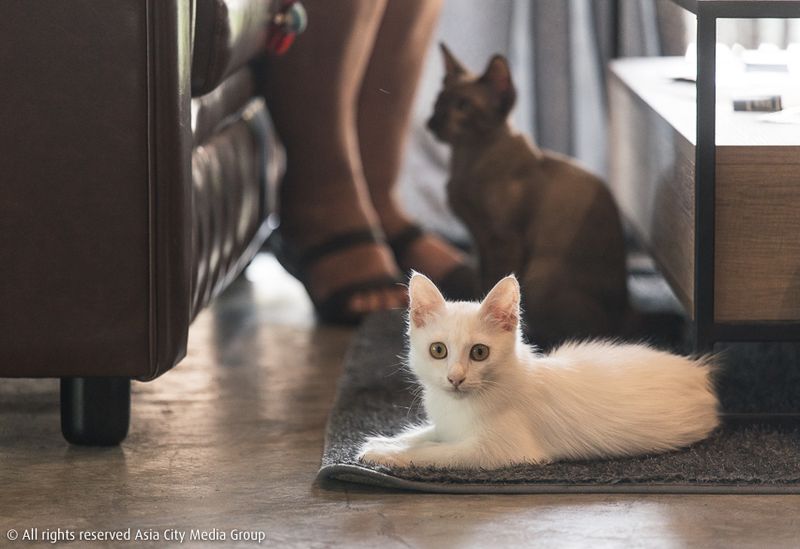📖 Table of Content:
- 1. Respect Local Cat Customs in Istanbul
- 2. Follow the Unspoken Rules in Rome’s Cat Colonies
- 3. Master the Art of Patience on Greek Islands
- 4. Bring Pocket Treats for Japan’s Cat Islands
- 5. Learn Cat Body Language in Moroccan Medinas
- 6. Support Cat Cafés with a Purpose in Southeast Asia
- 7. Volunteer with Street Cat Programs in Latin America
Street cats roam cities across the world, each with their own unique personalities and cultural significance. From Istanbul’s revered felines to Japan’s island cats, these furry wanderers have adapted to urban life in fascinating ways. Learning how to respectfully connect with street cats can be a rewarding experience that teaches us about local culture while providing moments of genuine animal connection during our travels.
1. Respect Local Cat Customs in Istanbul
Istanbul’s streets teem with thousands of cats who hold a special place in Turkish culture. Locals often leave food and water for their neighborhood felines, considering it good karma.
When approaching Istanbul’s cats, move slowly and offer an extended finger at their level. Many are accustomed to gentle human interaction but always watch for signs of discomfort. The city even built cat houses in parks!
Bring cat treats from local markets—Turkish cats particularly enjoy small fish snacks. Remember that these animals are considered community treasures, not strays, so treat them with the same respect locals do.
2. Follow the Unspoken Rules in Rome’s Cat Colonies
© Colonia Felina di Torre Argentina Roma Cat Sanctuary
Ancient ruins across Rome house organized cat colonies where volunteers provide care and management. The famous Largo di Torre Argentina ruins alone shelter nearly 150 cats!
Roman cats often have designated feeding times and areas. Rather than disrupting these schedules, visit during midday when cats typically lounge in visible spots. Sit quietly nearby and let curious felines approach you.
Photography is welcome, but avoid flash. Consider supporting local gattare (cat ladies) by donating to their cause rather than feeding cats yourself. These dedicated caretakers maintain the delicate balance between tourism and feline welfare.
3. Master the Art of Patience on Greek Islands
Greek island cats have perfected the laid-back Mediterranean lifestyle. These sun-loving felines can be found lounging on whitewashed walls and dozing under taverna tables.
Unlike city cats, island cats operate on “island time”—approach with patience and zero expectations. Sitting quietly at an outdoor café often results in curious visitors checking you out. Many taverna owners have favorite cats they’ve named and feed regularly.
A small dish of water is always more appreciated than food in the hot Greek climate. Fun fact: Cats were originally brought to Greek islands as mousers on ships but now serve as unofficial mascots for many islands like Santorini and Mykonos.
4. Bring Pocket Treats for Japan’s Cat Islands
Japan boasts several famous “cat islands” where felines dramatically outnumber humans. Tashirojima and Aoshima have become pilgrimages for cat lovers worldwide.
Before visiting, purchase cat-friendly treats from Japanese pet stores. Local brands contain ingredients cats there are accustomed to. Squat rather than bend over when offering treats—this less threatening posture makes a huge difference in how cats respond.
Morning visits yield better interactions as cats are more active and less overwhelmed by tourist crowds. Some islands have specific rules about photography and touching, so research before you go. Remember these communities depend on tourism that respects both human and feline residents.
5. Learn Cat Body Language in Moroccan Medinas
Morocco’s ancient medinas form perfect labyrinths for street cats who serve as unofficial guardians of these historic quarters. Their presence is considered baraka (blessed) in Islamic culture.
Moroccan cats communicate differently than Western pets. A slow blink is a sign of trust, while a flicking tail signals irritation. Many shopkeepers have relationships with specific cats—asking permission before interacting shows cultural awareness.
Cats in medinas often gather near fish markets and butcher stalls. Rather than disrupting their routine, observe from a distance first. Photographing cats near colorful mosaic doorways makes for stunning images that capture Morocco’s unique blend of feline and architectural beauty.
6. Support Cat Cafés with a Purpose in Southeast Asia
Southeast Asian cities like Bangkok and Kuala Lumpur have pioneered cat cafés with a twist—many double as adoption centers for former street cats. These establishments provide rehabilitation for cats while educating visitors.
When visiting, choose cafés that maintain high welfare standards. Good indicators include clean facilities, healthy-looking cats, and quiet spaces where cats can retreat. Many cafés have house rules about not waking sleeping cats or using flash photography.
Purchase something beyond the entry fee—these businesses fund street cat rescue operations through food and drink sales. Ask staff about their rescue stories; many café workers are passionate advocates who can share insights about local street cat situations.
7. Volunteer with Street Cat Programs in Latin America
Cities across Latin America have innovative community-led street cat programs that welcome tourist participation. From Mexico City to Buenos Aires, short-term volunteering opportunities abound.
Contact local animal welfare organizations before your trip to arrange a half-day helping with feeding routes or socialization programs. Many provide English-speaking volunteer coordinators who can match your skills with their needs.
Beyond the feel-good factor, volunteering offers authentic insights into neighborhoods tourists rarely see. You’ll meet passionate locals while making a tangible difference. Even a few hours helping at a spay/neuter clinic or feeding station creates meaningful connections with both local people and their beloved community cats.







